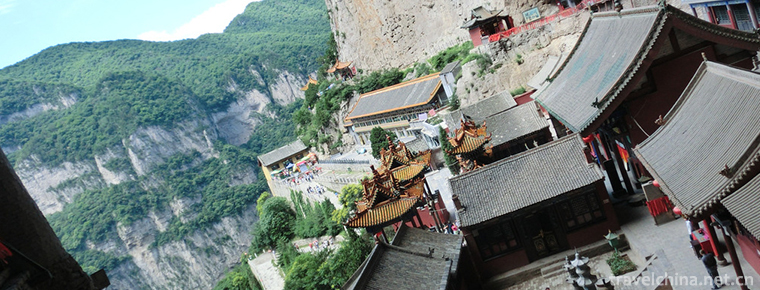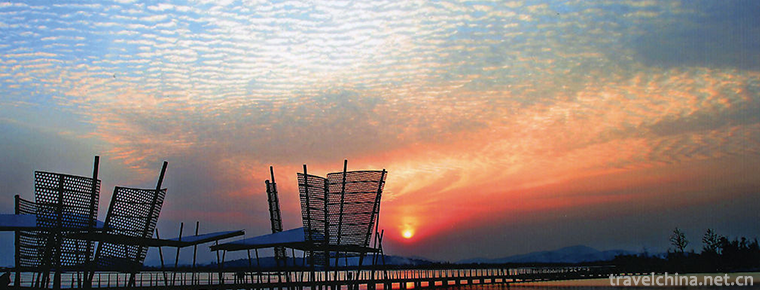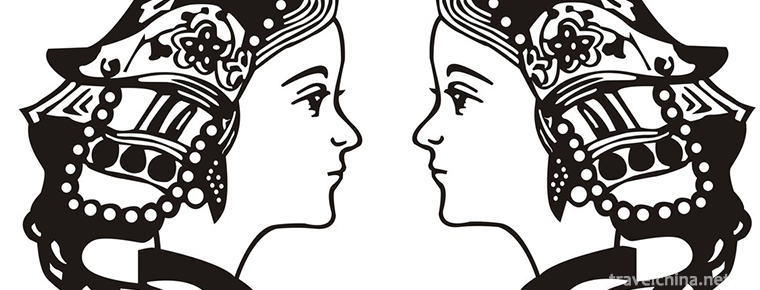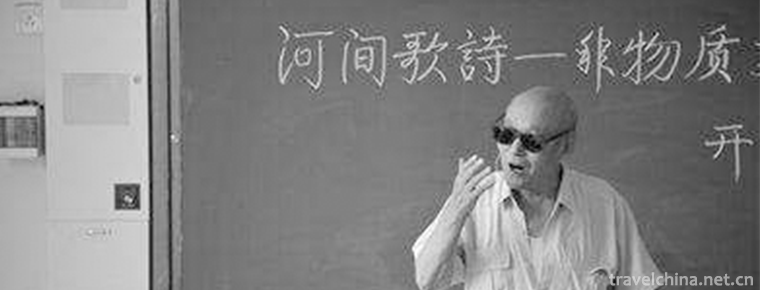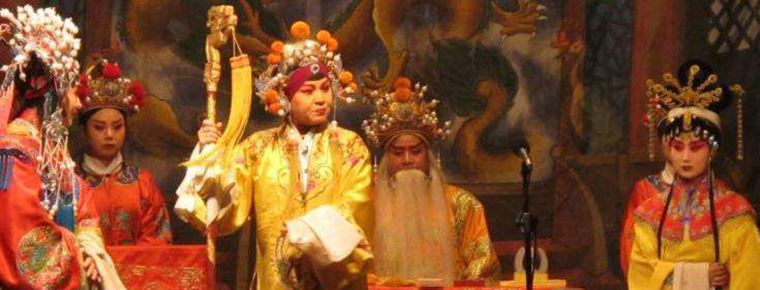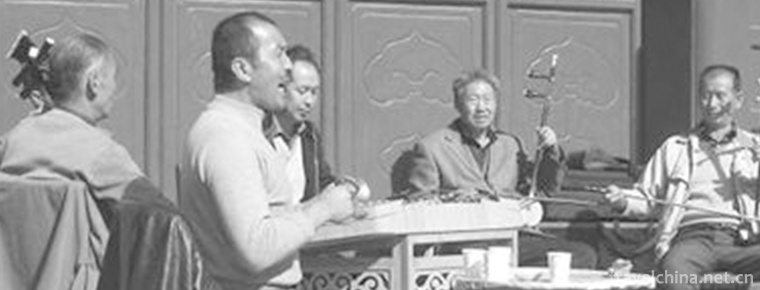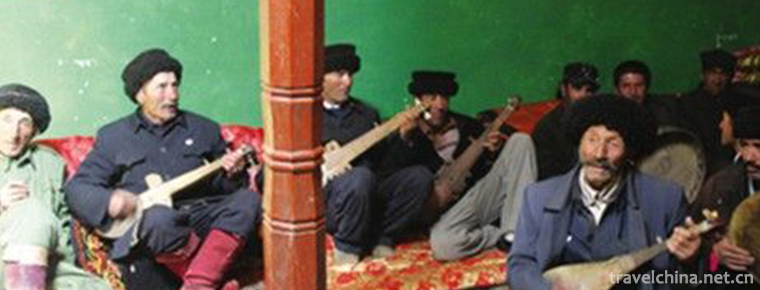Liubeichi Park
Liubeichi Park
Liubeichi park is located at No.4 Minjiang East Road, Yibin City, with an area of 238.18 mu. It is a national AAAA tourist attraction. It is a famous scenic spot and a key Park in Sichuan Province.
Liubeichi, a famous scenic spot in the park, is built by Huang Tingjian, a great poet and calligrapher of the Northern Song Dynasty, using natural stone Valley according to the artistic conception of Wang Xizhi's preface to Orchid Pavilion, which has a history of more than 900 years. It is one of the well preserved eight ancient scenes in Yibin, and also one of the most complete birthplaces of wine culture. The meaning of "winding water flowing wine cup" has attracted many celebrities and elegant guests from ancient and modern times to drink wine and write poems.
From Song Dynasty to now, there are more than 100 calligraphy stone carvings left by Huang Tingjian, Yang Shengan and other celebrities and scholars of all ages around Liubei pool. Liubeichi and stone inscriptions are listed as cultural relics protection units in Sichuan Province. There are also fuwenlou, Fuxi, FUWENG cave, valley resting statue, weijianxuan, Lihong Pavilion, miaomi Pavilion, Mingxiang tower, Jingyuan, diaohuang tower and other scenic spots in liubeichi scenic area.
A brief history of the park
Huang Tingjian, who has been in Yibin for three years, has created more than 50 poems and poems with a passion between mountains and rivers. The natural canyon, which is a rock of great rock beneath the dunke mountain, is his favorite treasure ground. The canyon is about 30 meters long, 6 meters wide and more than 20 meters high. Its natural landscape conditions are unique. Several large stones rise into mountains, and the cliffs are open and closed, and the space is staggered.
Imitating the artistic conception of Wang Xizhi, a calligrapher of the Eastern Jin Dynasty, Huang Tingjian built the famous Liubei pool for more than 900 years by using the topography and natural spring of the canyon. Keeping its natural landscape is the landscape concept of literati who advocate nature in gardening. In Liubei pool, from the bottom of valley to the top of cliff, winding steps go up, and several platforms are scattered among them, sometimes spacious and gentle, sometimes hanging on the cliff. Such beautiful scenery is Huang Tingjian's artistic re creation in understanding the rules of natural beauty.
After liubeichi was completed, Huang Tingjian loved it very much and often invited literati and scholars from Yibin to gather here. For Huang Tingjian, who was frustrated in his official career and frustrated in his life, here, he can be friends with mountains and rivers and have fun with Lin Quan. In this elegant situation, Huang Tingjian left some Chinese characters, such as ode to an Anle spring, ode to bitter bamboo shoots, and Ode to litchi green, which were handed down to later generations, and inscribed on the cliff the characters of "infinite longevity Buddha of the Antarctic old man", each one meter square. According to the records of Yibin County annals published in Jiaqing edition of Qing Dynasty, this is a genuine work of Huang Tingjian, which is rare in China. Since then, Lu You and other celebrities in the Southern Song Dynasty have left more than 100 inscriptions on liubeichi, continuously enriching its cultural connotation.
The ancestral hall of prime minister was built in Song Dynasty to commemorate Zhuge Liang, Prime Minister of Shu Han Dynasty, who conquered the barbarians in Yunnan in the Three Kingdoms period, and passed through Rongzhou (now Yibin), which has a history of more than 900 years. In December 1999, the prime minister's ancestral hall and Guandi temple were restored. The ancestral hall was an antique building in southern Sichuan during the Ming and Qing Dynasties. It was divided into the front hall, the main hall, the side gallery and the back hall. In front of the front hall of the prime minister's temple, there is a stone giant inkstone of the Ming Dynasty with a diameter of more than four meters, known as the "pen point Dan pool", which is one of the eight ancient scenes in Yibin. There are also some historical sites such as Jiangtai, Kongming well, Bazhen map and so on.
In addition, there are Guanyin Pavilion, Baifo hall, Yulong pool, Fangsheng boat and other scenic spots in the park. The park has complete tourism service facilities, which is a collection of historical culture, wine culture, Three Kingdoms culture and Buddhist culture. It is a tourist attraction with profound cultural heritage and unique natural and cultural landscapes.
In order to provide citizens with a more comfortable leisure environment and enhance the cultural connotation of the park, according to the arrangement and deployment of the municipal and district governments, Cuiping District government invested 93.5 million yuan to protect and renovate Liubei pool, a historic site of the millennium, from June 2012 to may 2014.
The renovation area of liubeichi park is 106560 square meters, and the core is to strengthen the cultural connotation of the park. On the basis of the protection of cultural relics and historic sites, Huang Tingjian cultural area is built in the style of imitating Song Dynasty. The roads and courtyards are simple and elegant, and the poetry recitation area is added to continue the cultural heritage. The Three Kingdoms Cultural area emphasizes the general platform and adds allusions such as "seven capture Meng Huo".
On holidays, the maximum number of tourists in the park is 20000. It receives about 1 million visitors every year.
cultural environment
In order to commemorate Huang Tingjian, later generations successively built "FUWENG Pavilion", "FUWENG tower", "Valley Temple", "diaohuang tower" and other buildings around liubeichi. Fu Weng Lou was once said to be Huang Tingjian's place of reading and meeting friends and splashing ink with his brush and brush. Here, he left some brilliant chapters such as Fu on bitter bamboo shoots and Ode to green litchi, which were handed down to later generations. After liberation, the people's Government of Yibin City established "martyr cemetery" and "liucupchi" Park in the northeast corner of liubeichi. Liubeichi and its stone carvings have been approved as key cultural relics protection units by the people's Government of Sichuan Province.
It is located at No.4, Minjiang East Road, Cuiping District, Yibin City, Sichuan Province.
You can take bus No.4, no.6, No.12, No.13, No.19, No.20, No.24, No.30.
Main attractions
Flowing cups and winding waters
When Huang Tingjian, a famous poet and calligrapher of the Northern Song Dynasty, was banished to Rongzhou, he imitated the meaning of "flowing wine cups and winding water" in Wang Xizhi's preface to Lanting collection, and built it with natural canyons. The pool is in the shape of nine curves. Eight stone benches are set up, and the clear spring between the rocks is used for flowing. The literati can drink wine and sing poems. It is one of the eight ancient sceneries in Yibin. Since the Song Dynasty, there have been many works of praise, such as praising Fu Weng's high wind, praising the success of building a pool, or thinking about the ancient feelings, or feeling with the times. It can be said that the fog is gathered in the cloud village, and the pearls are numerous, which is rich in the flavor of the times and has a variety of styles. Some poems and songs were engraved in the rocks, gullies, caves and valleys near liubeichi. According to the statistics in 1985, there are 128 inscriptions on stone inscriptions, and 64 inscriptions are basically complete. The earliest dating stone inscriptions were carved in the year of Wushen (1189), Chunxi, Song Dynasty. The handwriting of Liu Guangdi, Zhang Daqian, Huang Binhong, Zhang Aiping and others are also on the wall.
Valley break
The "Valley rest" beside the lotus pond is also a scene in the garden. In the meantime, Huang Tingjian, dressed in casual clothes and holding a book in his hand, sat by the pool in meditation. Two white cranes stand together in the water. This scene is also known as "two cranes with Fu Weng". It is elegant and fresh with a deep flavor. It vividly shows Huang Tingjian's peaceful and open-minded mind when he was banished to Rongzhou.
Fuwengting
Huang Tingjian was named "FUWENG" because of its name. It is not clear when it was built. According to the records of Yibin County annals of Jiaqing edition of the Qing Dynasty, "FUWENG Pavilion is located on the top of the cliff of FUWENG cave beside Liubei pool." In the inscriptions on the two walls of liubeichi, there are also three stone inscriptions related to "FUWENG Pavilion". In 1982, "FUWENG Pavilion" was built in the shape of the original Pavilion on the hill top of the "dianjiangtai" in liubeichi park. The plaque was written by Li Yimeng, former director of the external liaison department of the CPC Central Committee. The pavilion is 13 meters high and 9 meters in diameter. It has an ambulatory structure. There are 6 pillars in the inside and outside pavilions. There are 6 stone tables and 6 stools in the pavilion. There are bench seats between the pillars. The white columns and green tiles, double-layer curved eaves and flying angle are very meaningful. FUWENG pavilion has always been an important scenic spot for people to visit liubeichi, and also a memorial building for mourning Huang Tingjian. In 2002, liubeichi Park adjusted the park's scenic spots and changed its name to Jingyuan Pavilion. The plaque of "FUWENG Pavilion" was moved and hung under the eaves of the Square Pavilion beside the Linghu Lake in the park. The Square Pavilion was built in 1954. There is one on both sides of Linghu lake, one on the right side is specially called "FUWENG Pavilion", and the other on the left side is designated as "Miao Mo Pavilion".
Fu Weng Lou
It is located near Liubei pool and is said to have been built in Song Dynasty. It is said that when Huang Tingjian, a great poet and calligrapher of the Northern Song Dynasty, was banished to Yibin, Huang Tingjian read books to meet friends and splash ink with brush and ink. Here, he left "Ode to bitter bamboo shoots" and "Ode to green litchi", which were handed down to later generations. FUWENG tower is shown on the liucupchi map in Yibin County annals. Xin Chou (1901) in the 27th year of the reign of Emperor Guangxu of the Qing Dynasty carried out the cultivation and repair of fuwenlou. Beside the Liubei pool, there was a tablet named "the merits and virtues of Peixiu fuwenlou". In 1979, FUWENG building was rebuilt on the original site according to the original building pattern. The building is 11.4 meters high, 7 meters wide and 9.3 meters high. The whole building adopts the archaic structure of reinforced concrete, the eaves of sparrows are warped, the beams are painted and the windows are carved. Upstairs for the pavilion, downstairs for the outline, the shape of Jun Xiu exquisite, Lou Lan modeling elegant. On the front of the building, the three character plaque "Fu Weng Lou" was written by ZHOU Jianren, former vice chairman of the Standing Committee of the National People's Congress. On the bridge and railing, you can overlook the whole picture of Liubei pool, and you can enjoy the lotus scenery of fragrant Pavilion.
Bi Dian Dan Chi
The large stone inkstone of Ming Dynasty in front of the gate of the prime minister's ancestral hall was restored at the same time. With a diameter of 4.3 meters, the inkstone is engraved with two dragons robbing for treasure. There are auspicious patterns such as fish in Lian (Lotus) year. It is carved from a primitive giant stone. In the past, there was no cloud in the sky, and there was water in the inkstone. The White Pagoda in Dongshan, the black tower in Qixing mountain on the south bank, and the Jiuzhou tower on the Minjiang River were reflected in the inkstone. They were called "Bi Dian Dan pool" as one of the eight ancient scenes in Yibin, and later called it "Yantai stone". The temple of prime minister (Valley ancestral hall) and inkstone were listed as municipal cultural relics protection units on March 15, 1982, and municipal (prefecture level city) level cultural relics protection units on January 14, 1998.
Guan Yu Temple
Guan Yu, a native of Xiezhou, Shanxi Province, was a powerful general of the Three Kingdoms in the period of fighting for power in 160-219 A.D. Guandi temple is the only complete temple for worshiping Guan Yu in Sichuan Province.
Guandi temple is the back hall of the prime minister's temple, but it has its own courtyard with green tiles, red walls, towering trees and green bamboo. In the hall, Guan Yu is solemn and solemn. Guan Ping and Zhou Cang stand on both sides. Outside the hall, the ancient stone pagoda furnace and incense burner are full of green smoke, and the stone China table stands tall and upright, which adds a bit of solemnity. There are more than ten inscribed tablets and couplets of Song Hui, song Zhao Ji, Ming Wanli, Qing Kangxi, Qianlong, Xianfeng, Tongzhi and so on.
Kongming well
Zhuge Liang, the Prime Minister of the Shu and Han Dynasties of the Three Kingdoms, marched southward to Yunnan and led his troops down the Minjiang River. He set up a camp in Bodao (Yibin), where he deduced the art of war and practiced the eight array maps. He dug wells here for drinking. The well is like the eight trigrams, and the water is like a spring. It is cool and sweet. After Zhuge Liang's southern expedition to Sichuan, the well was reserved for the world to enjoy, known as Kongming well. The well is paved with clear stone slab, and the surrounding stone fence is a seat for tourists to rest. The rear screen wall is about 5 meters high, and the two ear walls are about 4 meters high. The screen wall is decorated with six ancient stone carvings. In the middle is the stone carving of "Shou Tian Bai Lu" in the Ming Dynasty, and the lower part is the stone carving of "double happiness and longevity" in the Qing Dynasty. The stone carvings on the left and right ear walls of the Ming Dynasty are "double lions playing ball" and "flowers blooming in four seasons" to celebrate birthday. The whole scenic spot is antique, with drum tiles, warped corners, screen walls, stone carvings, ancient wells, guardrails and stone drums. The layout is rigorous and evocative.
Diaohuang building
Diaohuanlou, according to Yibin County annals of the Qing Dynasty Jiaqing Edition: "governing the north, facing the river, the people in the past hung Huang Tingjian to build.". The original name is "Si Xian Tang", and the old Zhiyun is located on the Bank of suojiang river. Diaohuang tower was built in Song Dynasty to mourn for Huang Tingjian, a poet and calligrapher in Northern Song Dynasty. The original building is located on suojiang stone on the North Bank of Minjiang River.
The building area of diaohuang building is 830.22 square meters. It is a three story classical building with whisker base, cornice angle, yellow glazed tile roof, antique doors and windows, and Dougong structure.
The Stage of Appointing Commander
It is said that during the period of the Three Kingdoms, Liu Bei conquered Sun Wu in the East, and the middle of Shu was empty, so "all four counties in nanzhong rebelled.". Liu Bei died, the eastern expedition hastily ended, Zhuge Liang returned to Chengdu to organize troops to March south to the four counties of Yun and GUI.
When Zhuge Liang marched to the South and was hindered when he arrived at Yibin, he stationed troops on the left side of the river and ordered troops day and night. During the day, teams of cavalry swaggered across the north of the river, and red and white horses passed by in turns. In the evening, the torches flowed along the Bank of the river, resulting in the momentum of thousands of troops. In fact, they are all performances of Zhuge Liang's military talents. Among them, the highest and largest stone on which Zhuge Liang boarded was named "dianjiangtai"; at the same time, Zhuge Liang conquered the enemy with wisdom, and the story of "seven capture of Meng Huo" was also produced in this battle.
External evaluation
The temple of prime minister (Valley ancestral hall) and inkstone were listed as municipal cultural relics protection units on March 15, 1982, and municipal (prefecture level city) level cultural relics protection units on January 14, 1998.
In 2015, the Department of housing and urban rural development of Sichuan Province named liubeichi Park as the key Park of Sichuan Province.
In 2015, at the opening ceremony of 2015 Sichuan International Cultural Tourism Festival, the Sichuan provincial government officially awarded liubeichi park the title of national AAAA tourist attraction.
History and culture
Huang Tingjian
In 1098 A.D., Huang Tingjian, a great poet, was demoted to Fuzhou Biejia because of his crime, and was settled in Qianjiang District of Chongqing today. After arriving in Yibin, Huang Tingjian often went to the foot of Tianzhu Mountain for amusement, and stayed in the mountains and springs here. He imitated the story of Wang Xizhi's Orchid Pavilion, chiseled stones in the strange stone gorge to create momentum and lead the spring water to pass through. On the stone, the four characters "Qu Shui Liujiu" were engraved. They usually invite Yibin cultural celebrities to write poems here. The excavation of liubeichi adds a great cultural relic to Yibin.
Song culture
When Huang Tingjian, a famous poet and calligrapher of the Northern Song Dynasty, was banished to Rongzhou, he imitated the meaning of "flowing wine cups and winding water" in Wang Xizhi's preface to Lanting collection, and built it with natural canyons. The pool is in the shape of nine curves. Eight stone benches are set up, and the clear spring between the rocks is used for flowing. The literati can drink wine and sing poems. It is one of the eight ancient sceneries in Yibin. Since the Song Dynasty, there have been many works of praise, such as praising Fu Weng's high wind, praising the success of building a pool, or thinking about the ancient feelings, or feeling with the times. It can be said that the fog is gathered in the cloud village, and the pearls are numerous, which is rich in the flavor of the times and has a variety of styles. Some poems and songs were engraved in the rocks, gullies, caves and valleys near liubeichi. According to the statistics in 1985, there are 128 inscriptions on stone inscriptions, and 64 inscriptions are basically complete. The earliest dating stone inscriptions were carved in the year of Wushen (1189), Chunxi, Song Dynasty. The handwriting of Liu Guangdi, Zhang Daqian, Huang Binhong, Zhang Aiping and others are also on the wall.
Three Kingdoms culture
Yibin, across the river, Tianzhu Mountain is in front of you. The mountain is towering and steep. It is called "cuke mountain" in folk custom. According to legend, if there are stones rolling down the mountain, some people in Yibin will be in the imperial examination. Therefore, this mountain has always been known as the Fengshui mountain of Yibin. Yibin is indeed endowed with the aura of this mountain. By the beginning of the feudal imperial examination system, there were 40 Jinshi in Yibin, especially Cheng Gongxu, Cheng gongyue and Cheng gongshuo, who were ranked as Jinshi in the fourth year of Jiading of Song Dynasty (1211 A.D.), which shocked Sanchuan. Yibin is also known as a talented person. Tianzhu Mountain and spring and lie, at the foot of the mountain into a stream, called Peixi. The Bank of the river is rugged and rugged, with mountains and rivers, and many sails in the day, and fishing fire is full of the river in the evening. Yibin has been a place of recreation for thousands of years. The highest grotesque stone is "dianjiangtai". To dianjiangtai, it is closely related to the development of Southwest China. It is said that during the period of the Three Kingdoms, Liu Bei conquered Sun Wu in the East, and the middle of Shu was empty, so "all four counties in nanzhong rebelled.". After Liu Bei died, the eastern expedition hastily ended, and Zhuge Liang returned to Chengdu to organize troops to March south to the four counties of Yun and GUI, which left Yibin with a series of "Three Kingdoms culture". When Zhuge Liang marched to the south, Yibin was hindered, so he stationed troops in Jiangzuo and ordered soldiers day and night. During the day, teams of cavalry swaggered across the north of the river, and red and white horses passed by in turns. In the evening, the torches flowed along the Bank of the river, resulting in the momentum of thousands of troops. In fact, they are all performances of Zhuge Liang's military talents. The horse is painted, swaggering from the Bank of the river to show the enemy. Five miles behind Tianzhu Mountain, there is a natural swamp, in which horses are washed and dyed again. Therefore, later generations called this swamp "Xima pool", which has not been changed. The tallest and largest stone that Zhuge Liang ascended to the top of the general was named "dianjiangtai". When Zhuge Liang watched the stars at night, he named it Guandou mountain. Zhuge Liang conquered the enemy with wisdom, and the story of "seven capture of Meng Huo" was also produced in this war. In order to commemorate him, later generations built "prime minister Temple" near dianjiangtai. The "prime minister's temple" preserved today was rebuilt by Hu Feng, the magistrate of the Ming Dynasty (1506-1621). Hu Feng transferred to Songpan after building the shrine, and then returned to Yibin. She once wrote a poem to commemorate: "Songpan has done Xu Xu leisure, and has worshipped the public temple. It's useless to bow down and worship the public for the first time There is a huge stone in front of the temple, which is as horizontal as inkstone. When the rain is full, the black tower on the top of Qixing mountain, 20 miles away from the south of Yibin City, is just reflected in it, forming a large amount of orange. Therefore, it is called "Bi Dian Dan pool". It is one of the eight scenic spots in Yibin. With the remains of Zhuge Liang's expedition to the south, Yibin's "Three Kingdoms culture" is formed.

-
Mianshan Scenic Area
Mianshan Scenic Spot is a national AAAAA class tourist attraction, a key scenic spot in Shanxi Province, the birthplace of Ching Ming Festival (Cold Food Festival),.
Views: 298 Time 2018-11-24 -
Tourist Area of Wu Taihu Lake in Suzhou
Wuzhong Taihu Lake Tourist Area in Suzhou is located in the southwest corner of the paradise of Taihu Lake, covering an area of 21.5 square kilometers..
Views: 221 Time 2018-12-06 -
Jiangbulak Scenic Area
Jiangbulak Scenic Area is located in the low mountain belt 58 kilometers southeast of Qitai County, Xinjiang, China. It includes wide gully scenic area and Yangwatan beach.
Views: 143 Time 2019-01-21 -
Ah Shi Ma
Ashima, a traditional folk literature in Shilin Yi Autonomous County, Yunnan Province, is one of the national intangible cultural heritage..
Views: 229 Time 2019-03-28 -
Hejian song poem
Hejian Song and Poetry, Hejian City, Hebei Province, local traditional folk literature, one of the national intangible cultural heritage..
Views: 107 Time 2019-05-02 -
Gongs and drums
Gong and drum zaju, also known as "zaju of Gong and drum" and "long Yan zaju", is one of the local traditional dramas in Shanxi Province and Henan Province and one of the national .
Views: 118 Time 2019-05-15 -
Mei Ge
Meige is the general name of Yi folk song and dance and folk oral literature. Its content is all-encompassing and almost reflects the history, culture, production and life of the Yi people. It is rega.
Views: 164 Time 2019-06-02 -
Qinghai Pingxian
Qinghai Pingxian, also known as Xining Fu Zi, is one of the new local folk songs in Qinghai Province. It is popular in Xining, Huangzhong, Datong and Mutual Aid Agricultural Areas. Qupai is known .
Views: 203 Time 2019-06-10 -
Tajik Folk Songs
Tajik folk songs are very rich in content. The folk songs handed down to this day include folk songs reflecting ancient social life, customs and customs, eulogizing love and religious rituals. The mai.
Views: 166 Time 2019-06-17 -
Panzhihua in the Sui Dynasty to Yuan Dynasty
At the beginning of Sui Dynasty, Yanzhou was still set up, which was renamed Xining Prefecture and Guazhou Prefecture, and became Yueyi county again. The five counties of Yanzhou established by the Northern Zhou Dynasty were abolished, and the other five counties were subordinate .
Views: 137 Time 2020-12-14 -
The position of Panzhihua
Panzhihua City is located at the junction of Sichuan and Yunnan in Southwest China, 26 ° 05 ′ - 27 ° 21 ′ N and 101 ° 08 ′ - 102 ° 15 ′ E. Jinsha River and Yalong River meet here. It borders Huili, Dechang and Yanyuan counties of Liangshan Yi Autonomous Prefecture.
Views: 364 Time 2020-12-14 -
Administrative division of Dazhou
In 1950, Daxian district was set up, which belongs to the northern Sichuan administrative region. Daxian special office is located in Daxian county and governs eight counties, including Daxian County, Xuanhan County, Kaijiang County, Pingchang .
Views: 100 Time 2020-12-20
